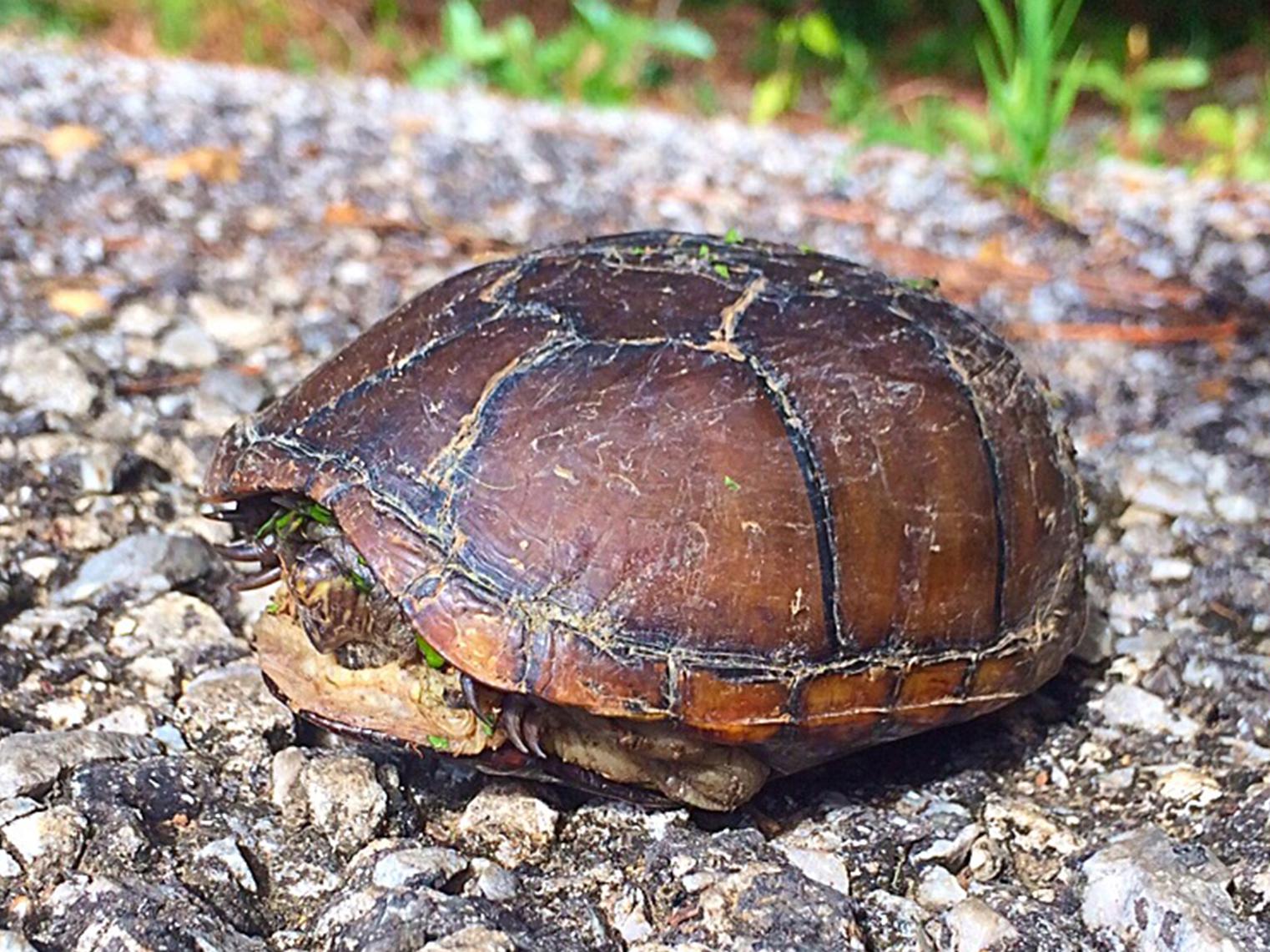Information Possibly Outdated
The information presented on this page was originally released on July 14, 2017. It may not be outdated, but please search our site for more current information. If you plan to quote or reference this information in a publication, please check with the Extension specialist or author before proceeding.
Drive carefully, avoid reptiles on the road
STARKVILLE, Miss. -- With the temperature rising daily, it is getting more common to spot turtles and snakes basking on the roads. Being aware of this change in reptile behavior can help drivers avoid hitting them.
As the sun rises and warms the roads, these ectothermic -- or cold-blooded -- animals can find themselves squished by vehicle tires while trying to absorb heat from the surface. Since reptiles don’t generate their own body heat, they sometimes take to the streets or other warm, sunny places to raise their body temperature so that they can metabolize food and increase energy levels. As their bodies warm, reptiles begin to move faster.
Sometimes, the Mississippi heat can be too much for our cold-blooded friends. When this happens, the reptiles seek cool places so that they are able to regulate their body temperatures. If they get too hot, they will go to a shaded, wet or underground spot to cool off.
So, what should drivers do if they come across a turtle basking in the road? First, try to avoid hitting it. Most of the time, this simple precaution is the best way to avoid fatal a collision with a reptile in the road. However, there are times when this option is not safe for a driver.
If it is safe to stop without disrupting traffic, you can pull over and persuade the reptile to walk or slither off the road from a safe distance. If you choose to pick up a turtle and move it, grab it by the sides of its shell. While this tactic reduces the turtle’s ability to bite you, it may still be able to scrape you with its nails. Place the turtle off the road in the direction it was initially traveling to reduce the chance that it will return to the middle of the road.
Unless you are able to properly identify a snake’s species, it is wise to not pick it up. Sometimes snakes will become defensive when you approach them. If you feel that you must move the snake out of the road, use a stick or long umbrella that allows you to keep 3 to 4 feet between you and the snake’s mouth. Typically, snakes can only reach about one-third of their body length when striking at a target.
So, as you are driving down the road this summer, either during the day or after an evening thunderstorm, be on the lookout for our native reptiles in the road, and do your best to avoid these important animals in our local ecosystems.

Editor’s Note: Extension Outdoors is a column authored by several different experts in the Mississippi State University Extension Service.









